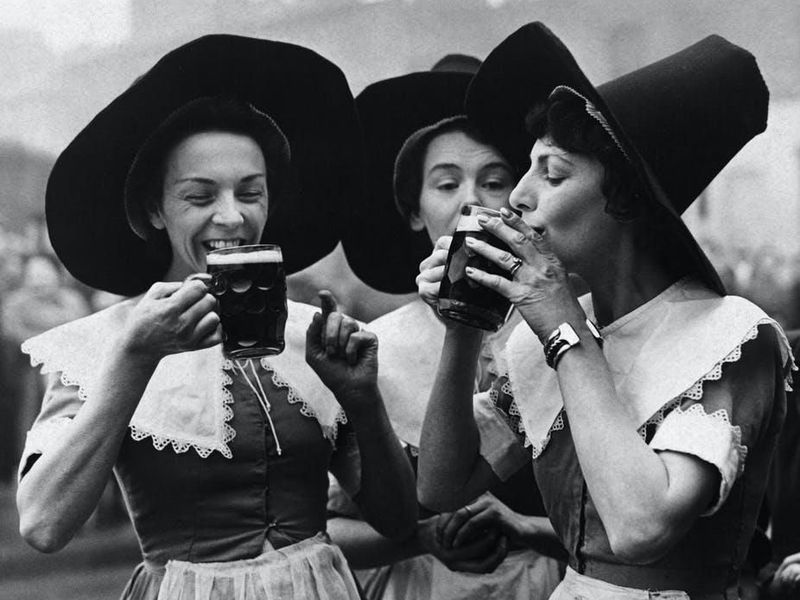
Song of the Witches — from Shakespeare’s Macbeth
Double, double toil and trouble;
Fire burn and caldron bubble.
Fillet of a fenny snake,
In the caldron boil and bake;
Eye of newt and toe of frog,
Wool of bat and tongue of dog,
Adder’s fork and blind-worm’s sting,
Lizard’s leg and howlet’s wing,
For a charm of powerful trouble,
Like a hell-broth boil and bubble.
Double, double toil and trouble;
Fire burn and caldron bubble.
Cool it with a baboon’s blood,
Then the charm is firm and good.
When you think of witches and brewing, you might think of Shakespeare’s Macbeth scene. But do you think of beer?
Beer has a long and rich history; we’ve been drinking it for almost 7,000 years. But what you might not realize is the original brewers were women. From the Stone Age to the 1700s, from the Vikings to the Egyptians, ale and then beer were household staples for most families in many regions of Europe, especially England. Beer provided a practical way to consume and preserve grains, and also was an important source of nutrients like carbohydrates and proteins. In some cultures it was also used for religious ceremonies.
And women played a key role. For many, fermenting became a normal household task. Some began selling beer in the local market, and it was a practical way for widows and unmarried women to earn some extra money, while married women partnered with husbands to run beer businesses.
If you could time-travel back to the Middle Ages and visit an English market, you’d probably see women standing in front of big cauldrons; they were the brewers. They wore tall, pointy hats so that their customers could find them. Cauldrons were the most practical way to transport liquids. Cats were kept in stores to keep mice away from the grain. If this scene reminds you of witchcraft, that’s probably how the supernatural imagery started.
Then in the early 16th century came the Reformation, which preached stricter gender norms and of course condemned witchcraft. This fundamentalist religious movement gave male brewers an opening just as women were establishing their foothold in the beer markets of Europe. To eliminate this unwanted competition, men began accusing female brewers of being witches and using their cauldrons to brew up magic potions.
Preposterous as it might sound today, the rumors worked. Since being accused of witchcraft could lead to ostracism at best, or prosecution and a death sentence at worst, it became dangerous for women to brew and sell beer.
This was just fine with the men. Even if they didn’t believe in witchcraft, many thought women had better things to do than brew beer. There were children to raise, clothes to make, chores to do. In fact, some towns, such as Chester, England in the 1500s actually made it illegal for most women to sell beer; spend all your time brewing and you’ll have trouble developing your homemaking skills for a husband.
So even today, men dominate the brewing industry, and women provide the iconography for witchcraft. Whatever’s fair, I guess.
For more information, see “Women Dominated Beer Brewing Until They Were Accused of Being Witches” by Laken Brooks at https://www.smithsonianmag.com/history/women-used-dominate-beer-industry-until-witch-accusations-started-pouring-180977171/?.
